Below, we’ve embedded the Archetype Meditation video, a 60-minute journey through the Warrior, Magician, Queen, King, Lover, and Child archetypes. Read on to explore the concepts behind this meditation and how it can transform your life.
Embedded Archetype Meditation Video
What Is Archetype Meditation?
Archetype meditation is a guided practice that invites you to explore the universal patterns or “archetypes” within your psyche. These archetypes, as conceptualized by Swiss psychologist Carl Jung, are innate, universal symbols and energies that shape human behavior and experience. By engaging with archetypes like the Warrior, Magician, Queen, King, Lover, and Child, you can uncover hidden aspects of yourself, heal emotional wounds, and integrate fragmented parts of your identity.
The meditation featured above, led by Joel from the Tapoot Therapy Collective, draws on Jungian psychology, Internal Family Systems (IFS) therapy, and neuroscience (specifically theta wave brain mapping) to create a holistic experience. It’s designed to help you recognize yourself as a “multiplicity”—a collection of interconnected parts—and guide those parts toward harmony and wholeness.
Why Archetype Meditation Matters
In today’s world, many of us feel disconnected from our true selves. Past traumas, societal expectations, and daily stressors can fragment our sense of identity, leaving us feeling lost or ungrounded. Archetype meditation offers a pathway to:
- Heal past wounds: By exploring how archetypes were shaped by early experiences, you can release suppressed emotions and limiting beliefs.
- Cultivate self-awareness: Engaging with archetypes helps you understand your strengths, shadows, and untapped potential.
- Foster emotional resilience: Balancing archetypal energies empowers you to navigate life’s challenges with confidence and grace.
- Deepen spiritual connection: The practice invites you to connect with universal energies, fostering a sense of unity with the world.
The Ideas Behind Archetype Meditation
At its core, archetype meditation is built on the idea that the human psyche is not a singular entity but a dynamic interplay of multiple “parts” or energies. These parts, represented by archetypes, carry unique gifts, wounds, and perspectives. The meditation encourages you to engage with these archetypes as living aspects of yourself, each with its own story and purpose.
Key Concepts
- Multiplicity of the Self: Drawing from IFS therapy, the meditation views the self as a collection of parts, each with its own role (e.g., protector, nurturer, creator). By acknowledging and harmonizing these parts, you can achieve inner balance.
- Archetypes as Universal Energies: Jungian psychology posits that archetypes are universal patterns inherited from the collective unconscious. They manifest in myths, stories, and personal experiences, shaping how we think, feel, and act.
- Healing Through Awareness: The meditation emphasizes non-judgmental awareness, inviting you to observe how archetypes show up in your body, emotions, and behaviors. This awareness is the first step toward healing and integration.
- Embodiment and Somatic Connection: The practice incorporates body-based techniques, such as breathwork and visualization, to ground archetypal energies in physical experience, aligning with neuroscience findings on theta wave states.
The Archetypes Explored
The meditation guides you through six archetypes, each representing a facet of human experience:
- Warrior: The assertive, boundary-setting self that protects values and faces challenges with courage.
- Magician: The intuitive, creative self that perceives hidden dynamics and transforms reality through ingenuity.
- Queen: The nurturing, compassionate self that embraces the full spectrum of human emotions and fosters connection.
- King: The purposeful, integrative self that leads with clarity and aligns actions with a higher vision.
- Lover: The passionate, connective self that seeks intimacy and communion with others and the world.
- Child: The innocent, playful self that embodies wonder, spontaneity, and unfiltered self-expression.
By engaging with these archetypes, you can uncover how they’ve been shaped by your life experiences and reclaim their gifts for personal growth.
Influences Shaping Archetype Meditation
The archetype meditation by Tapoo Therapy Collective is a rich tapestry of psychological, therapeutic, and spiritual influences. Here are the key frameworks that inform the practice:
1. Jungian Psychology
Carl Jung’s concept of archetypes is the cornerstone of this meditation. Jung believed that archetypes reside in the collective unconscious, influencing our thoughts, dreams, and behaviors. The meditation uses archetypes as a framework for self-exploration, helping you connect with universal energies like the Hero (Warrior), Wise One (Magician), or Great Mother (Queen).
2. Internal Family Systems (IFS) Therapy
IFS therapy, developed by Dr. Richard Schwartz, views the psyche as a system of parts, each with its own role and perspective. The meditation aligns with IFS by treating archetypes as parts of the self that can be dialogued with, healed, and integrated. This approach fosters self-compassion and reduces internal conflict.
3. Neuroscience and Theta Waves
The meditation incorporates neuroscience insights, particularly the role of theta brain waves in fostering deep relaxation and heightened awareness. By guiding you into a theta wave state through breathwork and visualization, the practice enhances your ability to access subconscious insights and process emotions.
4. Somatic and Parts-Based Therapies
The meditation draws on somatic therapies, which emphasize the connection between mind and body. Techniques like body scanning and posture adjustments help you embody archetypal energies, releasing stored trauma and fostering physical awareness.
5. Eastern Philosophies
References to the third eye chakra and practices like deep breathing reflect influences from Eastern spiritual traditions, such as Hinduism and mindfulness meditation. These elements enhance the meditation’s focus on intuition and inner clarity.
6. Modern Psychological Insights
The meditation integrates ideas from psychologists like Alfred Adler and Albert Ellis, who emphasized the impact of early experiences and the importance of challenging irrational beliefs. These insights help you reframe limiting narratives about power, assertiveness, and self-worth.
Techniques Used in Archetype Meditation
The guided meditation employs a variety of techniques to create a transformative experience. These techniques are carefully designed to engage your mind, body, and spirit, ensuring a holistic approach to healing and self-discovery.
1. Guided Visualization
The meditation begins with a visualization of a “point of light” traveling through your body, helping you connect with physical sensations and enter a relaxed state. Later, visualizations like imagining a crown (King) or a luminous field (Lover) anchor archetypal energies in your imagination.
2. Breathwork
Deep, intentional breathing is a core component, used to release tension, regulate the nervous system, and induce a theta wave state. Phrases like “take a few deep breaths, all the way in, hold it, and out” guide you to let go of stress and focus inward.
3. Body Awareness and Posture
Each archetype is associated with specific postures and physical sensations. For example, the Warrior encourages an upright, alert posture, while the Queen invites a relaxed, open stance. These somatic cues help you embody the energy of each archetype.
4. Reflective Inquiry
The meditation includes reflective prompts, such as “What messages did you absorb about anger, assertiveness, and power in early life?” These questions encourage self-awareness and help you uncover how archetypes were shaped by your past.
5. Affirmations and Reassurance
Positive affirmations, like “You are enough” (Child) or “You are safe to open and surrender” (Lover), counteract internalized shame and fear, fostering self-compassion and empowerment.
6. Integration and Closure
The meditation concludes with a synthesis of all archetypes, encouraging you to see them as interconnected parts of your psyche. Techniques like stretching, sighing, and placing a hand on your heart ground you back in the present, ensuring a gentle transition.
The Purpose of Archetype Meditation
The ultimate purpose of archetype meditation is to guide you toward wholeness, self-actualization, and authentic living. By engaging with the Warrior, Magician, Queen, King, Lover, and Child, you can:
- Heal Emotional Wounds: The meditation helps you process trauma and release suppressed emotions, creating space for healing and growth.
- Integrate Fragmented Parts: By dialoguing with archetypes, you harmonize conflicting aspects of your psyche, fostering inner unity.
- Unlock Hidden Potential: Each archetype carries unique gifts—assertiveness, creativity, compassion, leadership, intimacy, and playfulness—that can enhance every area of your life.
- Cultivate Resilience: Engaging with archetypes strengthens your ability to navigate challenges with confidence and adaptability.
- Deepen Connection: The practice fosters a sense of connection with yourself, others, and the world, aligning with the Lover’s and Child’s energies of communion and wonder.
As Joel emphasizes, “You are already what you seek, already whole beyond belief.” The meditation is not about becoming something new but remembering and reclaiming your essential nature.
How to Get Started with Archetype Meditation
Ready to dive into archetype meditation? Here’s how to begin:
- Watch the Guided Meditation: Start with the embedded video above. Set aside 60 minutes in a quiet space, and follow Joel’s guidance through each archetype.
- Create a Comfortable Environment: Find a seated, crouching, or lying position that feels aligned and at ease. Use pillows, blankets, or a yoga mat for support.
- Practice Regularly: To deepen your connection with archetypes, practice the meditation weekly or as needed. Journaling after each session can help you process insights.
- Explore Related Resources: Check out the Tapoo Therapy Collective website or podcast for more meditations and mental health insights. Consider reading Jung’s Archetypes and the Collective Unconscious or Schwartz’s No Bad Parts for deeper study.
- Support Your Journey: The meditation’s sponsor, Hardy Nutritionals, offers research-backed vitamins to support mental clarity and emotional balance. Use code TAPROOT for 15% off at GetHardy.
Why This Meditation Stands Out
The Ultimate Archetype Meditation by Tapoo Therapy Collective is uniquely powerful because it:
- Blends Science and Spirituality: Combines neuroscience (theta waves), psychology (Jung and IFS), and spiritual practices (chakra awareness) for a holistic experience.
- Addresses Universal Themes: The archetypes are relatable to everyone, making the meditation accessible to beginners and advanced practitioners alike.
- Fosters Deep Healing: By exploring how archetypes were shaped by early experiences, the practice offers a pathway to release trauma and reclaim your power.
- Encourages Embodiment: Somatic techniques ensure that insights are grounded in physical experience, enhancing their impact.
- Inspires Action: The meditation’s closing message—“Be wildly kind to yourself and never give up on your joyful genius”—motivates you to live authentically.
Embrace Your Inner Archetypes
Archetype meditation is more than a practice—it’s a journey into the heart of who you are. By engaging with the Warrior, Magician, Queen, King, Lover, and Child, you can heal past wounds, integrate fragmented parts, and awaken your fullest potential. The Ultimate Archetype Meditation by Tapoo Therapy Collective, embedded above, is a powerful tool to guide you on this path.
Take the first step today. Watch the meditation, reflect on your archetypes, and embrace the multiplicity of your psyche. As Joel reminds us, “There is no other journey but yours, and there is no other moment than the one you are in.” Let this practice be a catalyst for your healing, growth, and transformation.
Call to Action:
- Subscribe to the Tapoot Therapy Collective YouTube channel for more guided meditations and podcasts.
- Comment below: Which archetype resonated with you the most?
- Share this post with friends who could benefit from archetype meditation.
- Visit GetHardy.com and use code TAPROOT for 15% off to support your mental and emotional well-being.
Further Reading List for Archetype Meditation
To deepen your understanding of the Ultimate Archetype Meditation by the Tapoo Therapy Collective, explore the following books, articles, and resources. These materials cover Jungian psychology, Internal Family Systems (IFS) therapy, neuroscience, somatic therapies, and mindfulness practices that inform the meditation’s approach to healing, self-discovery, and personal growth. Each resource includes a brief description and a link to access it.
Books
- “Archetypes and the Collective Unconscious” by Carl G. Jung
- Description: This seminal work by Carl Jung explores the concept of archetypes as universal patterns in the collective unconscious. It’s a must-read for understanding the Warrior, Magician, Queen, King, Lover, and Child archetypes featured in the meditation.
- Link: Amazon
- “No Bad Parts: Healing Trauma and Restoring Wholeness with the Internal Family Systems Model” by Richard C. Schwartz
- Description: Dr. Richard Schwartz, founder of IFS therapy, explains how to work with the multiplicity of the self to heal trauma and foster integration. This book aligns with the meditation’s parts-based approach.
- Link: Amazon
- “The Body Keeps the Score: Brain, Mind, and Body in the Healing of Trauma” by Bessell van der Kolk
- Description: This groundbreaking book explores how trauma is stored in the body and how somatic practices, like those used in the meditation, can facilitate healing. It’s ideal for understanding the body-based techniques in the practice.
- Link: Amazon
- “Man and His Symbols” by Carl G. Jung
- Description: A more accessible introduction to Jungian psychology, this book illustrates how archetypes manifest in dreams, myths, and daily life. It’s perfect for beginners wanting to explore the meditation’s Jungian roots.
- Link: Amazon
- “Waking the Tiger: Healing Trauma” by Peter A. Levine
- Description: Peter Levine’s work on somatic experiencing highlights how to release trauma through body awareness, complementing the meditation’s focus on posture, breathwork, and somatic connection.
- Link: Amazon
- “The Power of Now: A Guide to Spiritual Enlightenment” by Eckhart Tolle
- Description: This modern spiritual classic emphasizes presence and mindfulness, aligning with the meditation’s invitation to connect with the Child archetype’s spontaneity and the Lover’s communion.
- Link: Amazon
Articles and Online Resources
- “What Are Jung’s Archetypes?” by The Jungian Center
- Description: This article provides a clear overview of Jungian archetypes, their role in the psyche, and their relevance to personal growth. It’s a great starting point for understanding the meditation’s framework.
- Link: The Jungian Center
- “An Introduction to Internal Family Systems Therapy” by Psychology Today
- Description: This article explains the basics of IFS therapy, including how to work with parts of the self, which is central to the meditation’s approach to recognizing the multiplicity of the psyche.
- Link: Psychology Today
- “The Science of Theta Brain Waves” by NeuroHealth Associates
- Description: Learn about theta brain waves and their role in relaxation, creativity, and emotional processing, which the meditation leverages through breathwork and visualization.
- Link: NeuroHealth Associates
- “Somatic Therapy: Releasing Trauma Through the Body” by GoodTherapy
- Description: This article explores somatic therapy techniques, such as body scanning and posture adjustments, which are used in the meditation to embody archetypal energies.
- Link: GoodTherapy
- “The Role of Chakras in Meditation” by Chopra Center
- Description: This resource explains the concept of chakras, including the third eye chakra referenced in the meditation’s Magician archetype section, and their role in spiritual practices.
- Link: Chopra
- “Guided Meditation for Beginners” by Mindful
- Description: For those new to meditation, this article offers practical tips on getting started, complementing the guided structure of the archetype meditation.
- Link: Mindful
Additional Resources
- Tapoot Therapy Collective Website
- Description: Explore more meditations, podcasts, and mental health resources from the Tapoo Therapy Collective, the creators of the archetype meditation.
- Link: Tapoo Therapy Collective Note: Replace with actual URL when available.
- Hardy Nutritionals Research Page
- Description: Learn about the research-backed vitamins mentioned in the meditation’s sponsor message, which support mental clarity and emotional balance.
- Link: GetHardy Note: Replace with actual URL when available.
- The IFS Institute
- Description: The official website for Internal Family Systems therapy offers resources, training, and articles to deepen your understanding of parts-based healing.
- Link: IFS Institute
How to Use This Reading List
- For Beginners: Start with Man and His Symbols by Jung and the Mindful article on guided meditation to build a foundation in archetypes and meditation practices.
- For Deep Dives: Explore Archetypes and the Collective Unconscious and No Bad Parts for in-depth insights into Jungian and IFS frameworks.
- For Somatic Focus: Read The Body Keeps the Score and Waking the Tiger to understand how the meditation’s body-based techniques facilitate trauma healing.
- For Online Learning: Use the articles from Psychology Today, GoodTherapy, and the Jungian Center for quick, accessible insights.
- For Ongoing Practice: Visit the Tapoo Therapy Collective and IFS Institute websites for additional meditations and therapeutic resources.

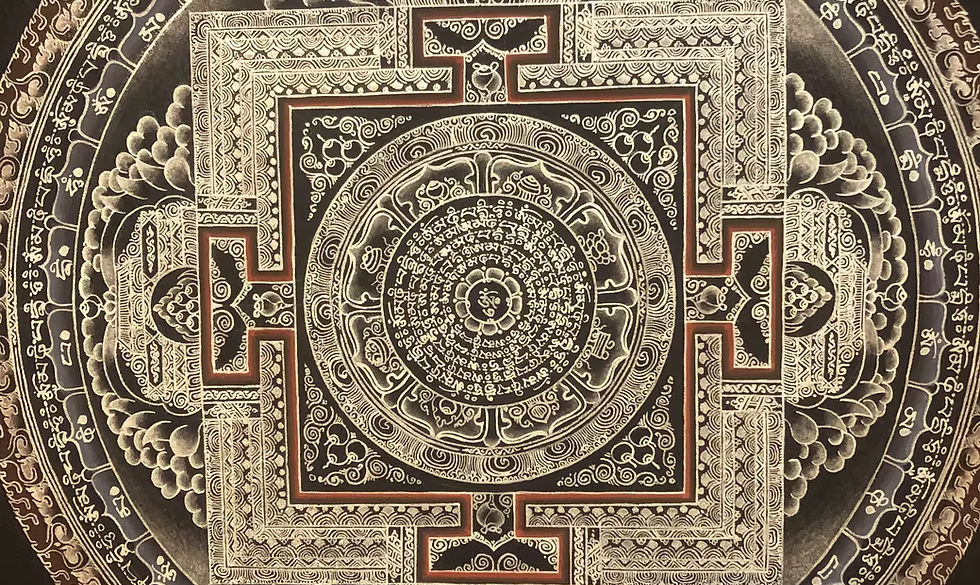





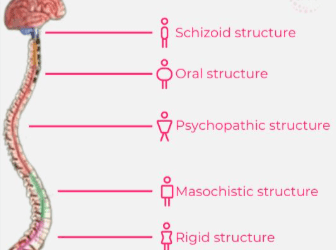

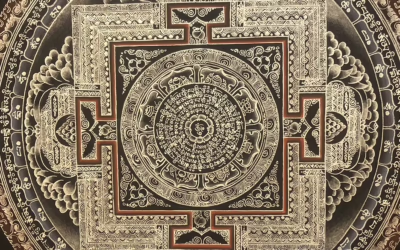






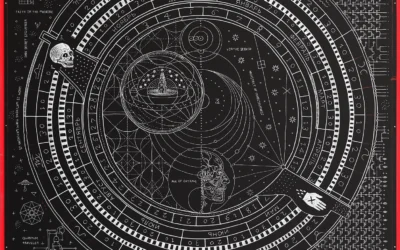
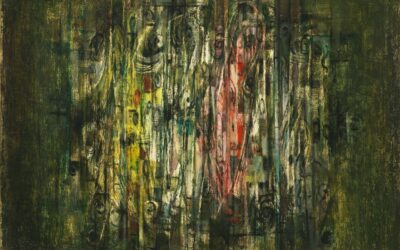

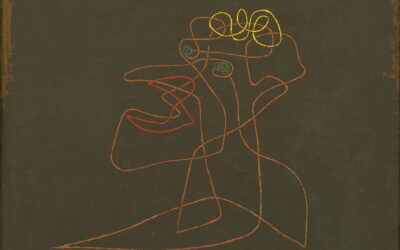



0 Comments